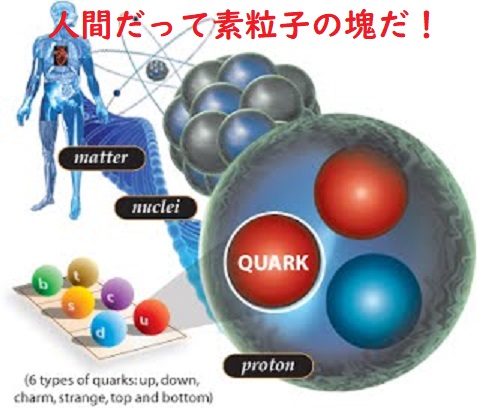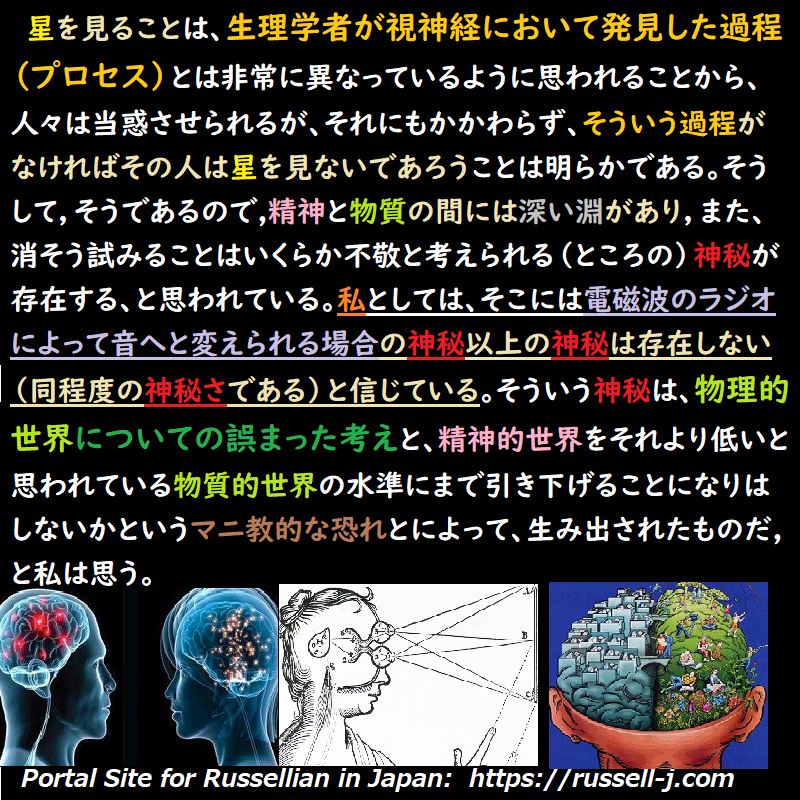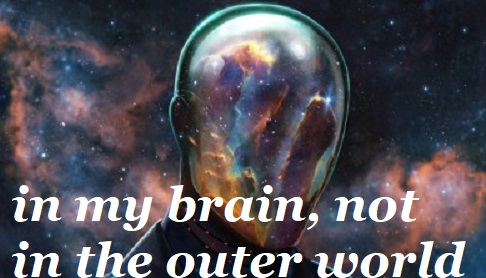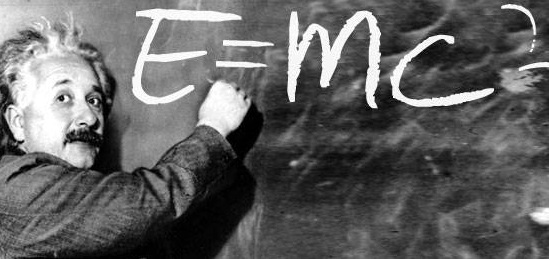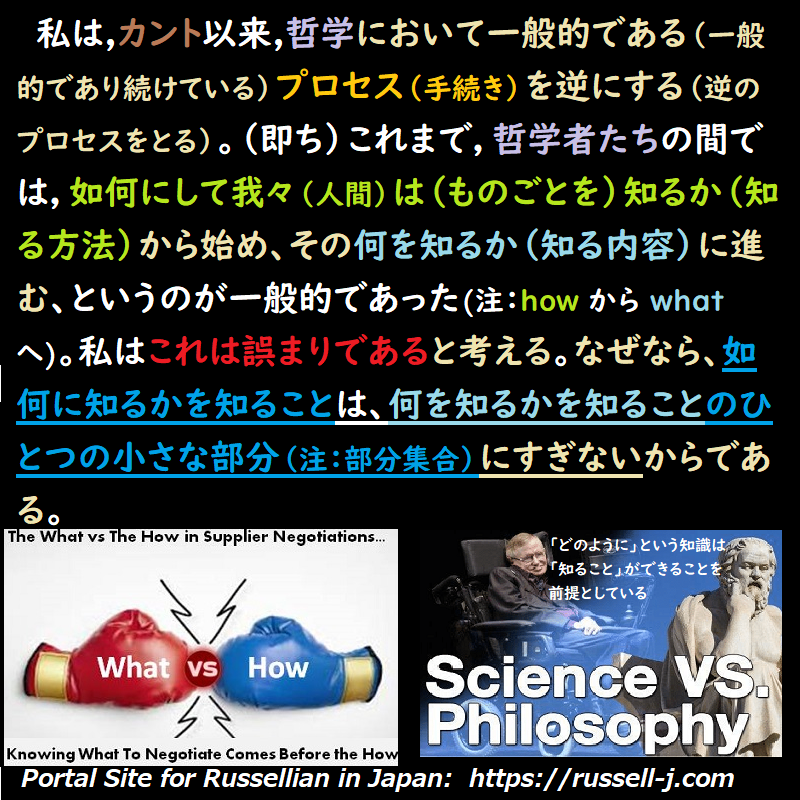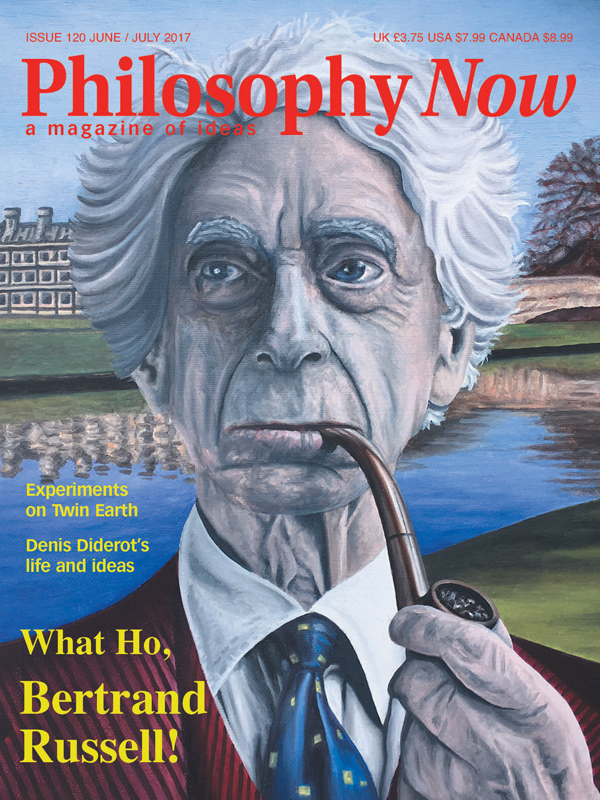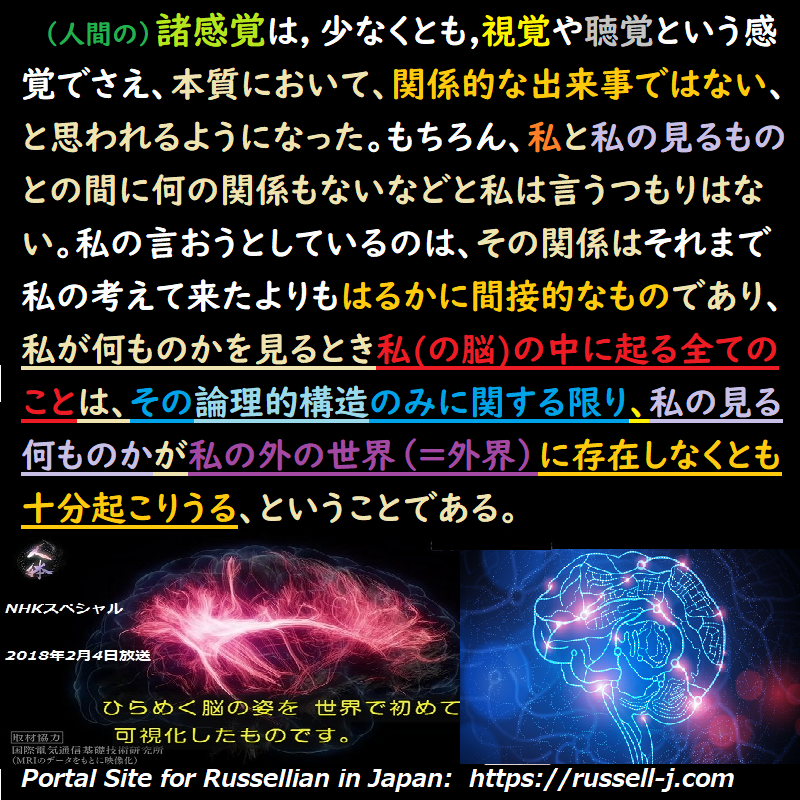我々がこれまで述べてきた世界は全く推論された(推論による)世界である。我々は物理学が語るような種類の存在(注:素粒子など)を知覚しない(知覚することはない)。また,物理的世界がそういう存在から構成されているとしたら、我々は眼や視神経を理解しない(do not see/理解しない)ということになる。というのは、(人間の)眼や視神経は,等しく、もし物理学者の言うことを信じるなら、理論物理学者が我々に親しませようと試みているあの奇妙な仮説的な存在から成っているからである。けれども、それらの存在の信用性は推論に負っているのであるから、その推論上の目的をそれらの存在が果すのに必要な程度にのみ定義されているにすぎない。電子や陽子や中性子や中間子や光子(pliotons)その他が、経験の直接的対象に属するところの単純な実在性を持つと想定する必要はない。それらはたかだか(at best)(たとえば)「ロンドン」という語が持っているような実在性を持っているだけである。「ロンドン」という語は便利な語であるが、この語を用いて述べられるあらゆる事実は、もっと手数がかかるけれども(cumbrously 煩わしい)、それを用いないで述べることが可能である。けれども,ロンドンと電子との間には一つの相違があり、しかも重要な相違がある。我々はロンドンを構成している様々な部分を見ることができ、そうして,実際に、部分(注:ロンドンの一部)の方が(ロンドン)全体よりもより直接的に我々に知られている(直接的に知っている)。電子の場合においては、我々はそれを知覚せず、また、電子を構成しているものだと我々が知っているいかなるものも知覚しない。我々は,電子をある理論的目的を満たすところの仮説的な存在としてのみ知っている。理論物理学に関する限り、そういう目的を満たすものならばいかなるものでも電子だと考えて取り扱うことが可能である。電子は単純であるかも知れないし、複合的なものであるかも知れない。もし電子が複合的なものであるとしても、その構成要素は、合成の結果として生ずる構造が、電子の必要とする特性を持ちうるのであれば、どのようなものであってもよい。そしてこれら全てのことは、無生物の世界にのみならず、眼やその他の感覚器官、神経及び脳にも等しくあてはまる。
Chapter 2: My present view of the world, n.8 The world of which we have been speaking hitherto is entirely an inferred world. We do not perceive the sort of entities that physics talks of, and, if it is of such entities that the physical world is composed, then we do not see the eye or the optic nerve, for the eye and the optic nerve, equally, if the physicist is to be believed, consist of the odd hypothetical entities with which the theoretical physicist tries to make us familiar. These entities, however, since they owe their credibility to inference, are only defined to the degree that is necessary to make them fulfil their inferential purpose. It is not necessary to suppose that electrons, protons, neutrons, mesons, photons, and the rest have that sort of simple reality that belongs to immediate objects of experience. They have, at best, the sort of reality that belongs to ‘London’. ‘London’ is a convenient word, but every fact which is stated by using this word could be stated, though more cumbrously, without using it. There is, however, a difference, and an important one, between London and the electrons: we can sec the various parts of which London is composed, and, indeed, the parts are more immediately known to us than the whole. In the case of the electron, we do not perceive it and we do not perceive anything that we know to be a constituent of it. We know it only as a hypothetical entity fulfilling certain theoretical purposes. So far as theoretical physics is concerned, anything that fulfils these purposes can be taken to be the electron. It may be simple or complex; and, if complex, it may be built out of any components that allow the resultant structure to have the requisite properties. All this applies not only to the inanimate world but, equally, to the eyes and other sense organs, the nerves, and the brain.
Source: My Philosophical Development, chap. 2,1959.
More info.:https://russell-j.com/beginner/BR_MPD_02-080.HTM
russellian-j のすべての投稿
ラッセル『私の哲学の発展』第2章 私の現在の世界観 n.7
事象(出来事)がもはや(世界の)究極の素材ではない(ところの)さらに進んだ分析の段階の可能性がある(さらに分析を進めると事象(出来事)がもはや世界の究極の素材ではないという可能性が存在している)。しかし,私はそれについてはここでは論じないことにしよう。 星(恒星)が発する光がその星からあらゆる方向に進むにつれて、純粋に物理的な理由により、多くの異なる時間と場所における事象(出来事)がしばしばまとめられて(言わば)一人の祖先から出た(多くの)家族とすることができる(can often be collected into families )のを(これまで)我々は見てきた。そういう一つの家族のひとつの枝において連続する(連続して現れる)諸世代は、状況に従って,様々な程度を示す相似性をお互いに持っている。星から我々(地球)の大気に至る光の移動(the journey 光の旅)を形成する多くの事象(出来事)は、ゆっくりしておりほとんど変化しない(change slowly and little ゆっくりとわずかだけ変化する)。そして,それがそれらの事象(出来事)を持続するものと考えてもよい、光子(photon)と呼ばれる単一の実体の航海(voyage 移動)とみなすことを可能にするのである。しかし、光が我々(地球)の大気に到達すると、一連のより不思議なこと(odder and odder things)がその光(光子)に連続的に起りはじめる。すなわち光は霧や雲によってさえぎられたり変形させられたりするかも知れない(可能性がある)。また光は水面に当り,反射したり屈折したりすることもある(かも知れない)。またそれは写真乾板に当って、天文学者の興味をひく黒い点となることもある(かも知れない)。最後に、光はたまたま人間の眼に当ることもある(かも知れない)。このことが起ると(人間の目に光があたると)、その結果(生ずること)はとても複雑である。(人間の)眼と脳との間には、生理学者によって研究されている一連の事象(出来事)が存在しており、それは、電波(radio waves)が演説者の言葉に似ていないと同様に、外界(outer world 外部世界)の光子と似ていない。ついには,生理学者によって追跡される神経の撹乱は最終的に脳内の適切な領域に到達し、その後、その脳を持つ人(その脳の持ち主)がその星を見る(ことになる)。星を見ることは、生理学者が視神経(optic nerve)において発見した過程(プロセス)とは非常に異なっているように思われることから、人々は当惑させられるが(当惑するが)、それにもかかわらず、そういう過程(プロセス)がなければその人は星を見ないであろうことは明らかである。そうして,そうであるので,精神と物質の間には深い淵があり,また、消そう試みることはいくらか不敬と考えられる(ところの)神秘が存在する、と思われている。私としては、そこには電磁波のラジオによって音へと変えられる場合の神秘以上の神秘は存在しない(同程度の神秘さである)と信じている。そういう神秘は、物理的世界(物的世界)についての誤まった考えと、精神的世界(精神世界)をそれより低いと思われている物質的世界の水準にまで引き下げることになりはしないかというマニ教的な恐れとによって、生み出されたものだ,と私は思う。
Chapter 2: My present view of the world, n.7
There is a possibility of a further stage of analysis in which events are no longer the ultimate raw material. But I will not consider this in the present discussion. We have seen that, for purely physical reasons, events in many different places and times can often be collected into families proceeding from an original progenitor as the light from a star proceeds from it in all directions. The successive generations in a single branch of such a family have varying degrees of resemblance to each other according to circumstances. The events which constitute the journey of the light from a star to our atmosphere change slowly and little. That is why it is possible to regard them as the voyage of single entities called photons, which may be thought of as persisting. But when the light reaches our atmosphere, a series of continually odder and odder things begins to happen to it. It may be stopped or transformed by mist or cloud. It may hit a sheet of water and be reflected or refracted. It may hit a photographic plate and become a black dot of interest to an astronomer. Finally, it may happen to hit a human eye. When this occurs, the results are very complicated. There are a set of events between the eye and the brain which are studied by the physiologist and which have as little resemblance to the photons in the outer world as radio waves have to the orator’s speech. At last the disturbance in the nerves, which has been traced by the physiologist, reaches the appropriate region in the brain; and then, at last, the man whose brain it is sees the star. People are puzzled because the seeing of the star seems so different from the processes that the physiologist discovered in the optic nerve, and yet it is clear that without these processes the man would not see the star. And so there is supposed to be a gulf between mind and matter, and a mystery which it is held in some degree impious to try to dissipate. I believe, for my part, that there is no greater mystery than there is in the transformation by the radio of electro-magnetic waves into sounds. I think the mystery is produced by a wrong conception of the physical world and by a Manichaean fear of degrading the mental world to the level of the supposedly inferior world of matter.
Source: My Philosophical Development, chap. 2,1959.
More info.:https://russell-j.com/beginner/BR_MPD_02-070.HTM
ラッセル『私の哲学の発展』第2章 私の現在の世界観 n.6
こういった考察は、我々にどういった種類の宇宙像を構築するように誘うであろうか? その答えは、(これまで)行われてきた分析の程度に応じて異なる段階に従って進まなければならない,と私は考える。(注:I think the answer must proceed by stages differing as to the degree of analysis that has been effected./as to :~に応じて;~に関して)現在の目的のためには,私は「事象(出来事)」の観念(notion)を基本的なものとしてとり扱うことで満足しよう。私は各事象(出来事)が有限の量の時空(space-time)を占めており(専有しており),時空の同じ領域を,全体ではなく,部分的に占めている(専有している)他の無数の事象(出来事)と重なりあっていると想像する。点-瞬間(注:空間の最小単位としての「点」+時間の最小単位の「瞬間」を相対性理論にあわせて表現したもの)というもので仕事をしたい数学者は、それ(点-瞬間)を重なり合う多くの事象(出来事)の集まり(集合)から、数学的論理学を使って,構成することができる。しかし,それはただ数学者の技術的目的のためになされることであり、当面,我々はそれは無視してよいであろう。時空の任意の小さな領域において起りつつある事象(出来事)は、他の場所で起りつつある事象(出来事)と無関係ではない。反対に、一枚の写真乾板がある星の写真を生じうるのは、その写真乾板において起りつつある一つの事象(出来事)が、我々が遺伝と呼ぶところのものによって当該(今問題にしている)星と関連しているからである。その写真乾板は、他の写真乾板によって写真にとられる場合、新たな子孫(a fresh progeny)を生むことになる(注:星の子供である写真乾板を写真にとって孫の写真乾板をつくる)。数理物理学 -それは扱う問題の極めて抽象的な側面のみに関心を持つ- においては、これらのさまざまな過程は、エネルギーが移動する経路のように見える(として見なされる)。数理物理学の世界が我々の日常生活の世界からかけ離れているように見えるのは、数理物理学が非常に抽象的なものだからである。しかし,両者の相違は実在的なものというよりも見かけのもの(外見的なもの)である。たとえば,我々人口統計を調べる場合を想定すれば、多くの(統計)項目を作り上げる(make up 構成する)人々は、人口調査で記録をとられる前に(の)現実の人間たちの持っている特徴をほとんど全て奪われる。しかし,この場合においては、抽象の過程があまり遠くまで進んでいないのなら、我々はそれを想像力によって(in imagination)もとにもどす(undo)ことに大した困難を感じない。しかし,数理物理学の場合には、抽象的なものから具体的なものへ戻る旅は長くかつつらいもので(arduous)あり、単なる疲労のために,我々は途中で休みたくなり、何らかの半ば抽象的なものに、正当に主張できない具体的実在性を与えるように誘惑されるのである。
Chapter 2: My present view of the world, n.6
What sort of picture of the universe do these considerations invite us to construct. I think the answer must proceed by stages differing as to the degree of analysis that has been effected. For present purposes I shall content myself by treating as fundamental the notion of ‘event’. I conceive each event as occupying a finite amount of space-time and as overlapping with innumerable other events which occupy partially, but not wholly, the same region of space-time. The mathematician who wishes to operate with point-instants can construct them by means of mathematical logic out of assemblages of overlapping events, but that is only for his technical purposes, which, for the moment, we may ignore. ‘The events occurring in any given small region of space-time are not unconnected with events occurring elsewhere. On the contrary, if a photographic plate can photograph a certain star, that is because an event is happening at the photographic plate which is connected by what we may call heredity with the star in question. The photographic plate, in turn, if it is photographed, is the origin of a fresh progeny. In mathematical physics, which is only interested in exceedingly abstract aspects of the matters with which it deals, these various processes appear as paths by which energy travels. It is because mathematical physics is so abstract that its world seems so different from that of our daily life. But the difference is more apparent than real. Suppose you study population statistics, the people who make up the items are deprived of almost all the characteristics of real people before they are recorded in the census. But in this case, because the process of abstraction has not proceeded very far, we do not find it very difficult to undo it in imagination. But in the case of mathematical physics, the journey back from the abstract to the concrete is long and arduous, and, out of sheer weariness, we are tempted to rest by the way and endow some semi-abstraction with a concrete reality which it cannot justly claim.
Source: My Philosophical Development, chap. 2,1959.
More info.:https://russell-j.com/beginner/BR_MPD_02-060.HTM
ラッセル『私の哲学の発展』第2章 私の現在の世界観 n.5
これらの多種多様な過程(プロセス)は全て純粋に物理学に属する(物理学が扱う対象である)。我々はビデオカメラが精神(心)を持っているとは考えないし,たとえ,そのビデオカメラの製造メーカーが少し工夫を凝らして(by a little ingenuity)、劇場の1階席(一般席)にあるビデオカメラ群(those in the pit)が拍手喝采すると(するやいなや)最も舞台に近い席(上等席)にあるビデオカメラ群(those in the stalls)は冷笑するというように作られているとしても、我々はビデオカメラが精神(心)を持っていると思わないほうがよいであろう(should not suppose 想定しない方がよい/「should not」は「~しないほうがよい」と相手にやさしくアドバイス,「must not」は「~してはいけない」と強く禁止)。これらの知覚の物理的類似性(physical analogies to perception)が示していることは、全ての場所及び全ての時間ではないとしても、大部分の場所と時間において、莫大な数の互いに重なりあう事象(出来事)が起っている(生じつつある)ということであり、また、これらの事象(出来事)の多くは,ある一定の場所と時間において、因果の連鎖により,ひとつのオリジナルな(最初の)の事象(出来事)と結び付けられており、このオリジナルな(最初の)事象(出来事)は、一種の多産性の遺伝(a sort of prolific heredity)によって、膨大な数の異なる場所において、自分自身に似通っている子孫を生み出している,ということである。
Chapter 2: My present view of the world, n.5
These various processes all belong purely to physics. We do not suppose that the cine-cameras have minds, and we should not suppose so even if, by a little ingenuity on the part of their maker, those in the stalls were made to sneer at the moments when those in the pit applauded. What these physical analogies to perception show is that in most places at most times, if not in all places at all times, a vast assemblage of overlapping events is taking place, and that many of these events, at a given place and time, are connected by causal chains with an original event which, by a sort of prolific heredity, has produced offspring more or less similar to itself in a vast number of different places.
Source: My Philosophical Development, chap. 2,1959.
More info.:https://russell-j.com/beginner/BR_MPD_02-050.HTM
ラッセル『私の哲学の発展』第2章 私の現在の世界観 n.4
あるいは、別の実例をとってみよう。ある裕福な皮肉屋(cynic)がいて、芝居好きの人達(theatergoer 観劇好き)の俗物根性(philistinism )にうんざりし、生きた人間の前ではなく,多数のビデオカメラ(cine-cameras 映画用カメラ,シネカメ)の前で劇を上演させることに決めたとしよう。(その場合)ビデオ用カメラは - それらは全て等しく高性能のものと仮定する- はそれぞれ,遠近法の法則(laws of perspective)及び(カメラの)舞台からの距離によって違いはありながら(も)互いにとても似通ったビデオ記録を生み出すであろう。これは,再び、写真乾板と同様に,それぞれの(一つ一つの)ビデオカメラにおいて、各瞬間に、複合の事象(出来事)(a complex of events いくつかの事象が複合したもの)が起っており、それは舞台において起っている複合した事象(出来事)と密接な関係をもつということを示す。ここにおいては(も)、前の(写真乾の板)場合と同様に、多様な源(発生源)から進行する(発する)個々別々の影響を想定する必要がある。ある瞬間にある役者が「死ね(くたばれ),悪党!」とどなり、もう一人の役者が「人殺し! 助けて!」と叫ぶならば、この二つの事象(出来事)は(カメラに)記録され、従ってこの二つの事象(出来事)と関連する何ごとかがそれぞれのビデオカメラにおいて起っているに違いない。 もう一つ別の例をとろう。いまある演説が同時に多数の録音機によって録音されると想定すると、その録音記録は,元の演説にあきらかな形ではまったく似ていない(注:一方は人の声、一方はレコードに掘られた一連の溝,というようにまったく別物)。にもかかわらず,適切な機械装置によってその記録はもとの演説に非常によく似ているものを再生することができる。従って,それら記録はもとの演説と共通な何ものかをもっているに違いない。しかし,この両者が共通にもっているものは,構造に関して,かなり抽象的な言葉で言い表わすことができるだけである。放送は,同じプロセスについて、さらに良い(even better)実例を与える。一人の演説者と、ラジオでその演説を聞いている人との間に介在するものは、一見したところ(on the face of it),演説者の言うところにも,聴取者の聞くところにも,まったく似ていない。ここにもまた,びとつの因果(原因と結果)の連鎖があり、その最初(注:発声)は最後(注:再生した声)に似ているが、その中間項(intermediate terms 音が刻み込まれた溝)は、その本質(内在的性質)に関するかぎり、両端(最初と最後)とは全く異なった種類のもののように見える。この因果の連鎖の全体を通して保存されているのは、前の録音機の場合と同様この場合においても、構造についての一定の恒常性(不変性)である。
Chapter 2: My present view of the world, n.4
Or let us take another illustration. Let us imagine a rich cynic, disgusted by the philistinism of theatregoers, deciding to have a play performed, not before live people, but before a collection of cine-cameras. The cine-cameras – supposing them all of equal excellence – will produce closely similar records, differing according to the laws of perspective and according to their distance from the stage. This again shows, like the photographic plate, that at each cine-camera a complex of events is occurring at each moment which is closely related to the complex of events occurring on the stage. There is here the same need as before of separable influences proceeding from diverse sources. If, at a given moment, one actor shouts, ‘Die, Varlet!’ while another exclaims, ‘Help! Murder!’ both will be recorded, and therefore something connected with both must be happening at each cine-camera. To take yet another illustration: suppose that a speech is recorded simultaneously by a number of gramophones, the gramophone records do not in any obvious way resemble the original speech, and yet, by a suitable mechanism, they can be made to reproduce something exceedingly like it. They must, therefore, have something in common with the speech. But what they have in common can only be expressed in rather abstract language concerning structure. Broadcasting affords an even better illustration of the same process. What intervenes between an orator and a man listening to him on the radio is not, on the face of it, at all similar either to what the orator says or to what the listener hears. Here, again, we have a causal chain in which the beginning resembles the end, but the intermediate terms, so far as intrinsic qualities are concerned, appear to be of quite a different kind. What is preserved throughout the causal chain, in this case as in that of the gramophone record, is a certain constancy of structure. Source: My Philosophical Development, chap. 2,1959. More info.:https://russell-j.com/beginner/BR_MPD_02-040.HTM
ラッセル『私の哲学の発展』第2章 私の現在の世界観 n.3
理論物理学が(我々に)与えなければならない情報がいかに極めて抽象的なものであるかは(how exceedingly abstract)、必ずしも十分に理解されていない。理論物理学は,事象(出来事)の論理的構造をとり扱うことを可能にする一定の(いくつかの)基本的な方程式をたてる(lay down 定める)が、他方,その論理的構造を有する多くの事象(出来事)の固有の性格(instrinsic character 本質的な性格)が何であるかは全く未知のままにする(remain 残す)(注:”events” に野田氏は「出来事」という訳語を与えているが、”events” と “occurences” という単語が同時に出てくることがあり、その場合は、前者を「事象」、後者を「出来事」と訳語を変えないと、何を言っているかよくわからなくなる)。我々(各個人)が事象(出来事)の固有の性格を知るのは、その事象(出来事)が我々(=自分/それぞれ)の身に(直接)起こる(生じる)場合だけである。理論物理学の示すいかなるものによっても,(自分以外の)他の場所で起る事象(出来事)の本質的な性格については,我々は何も言うことができない。そういう事象(出来事)は、我々(各自)の身に起る事象(出来事)と全く同様のものであるかもしれないし、あるいは、厳密にはまったく想像不可能な面(点)でまったく異なっているかもしれない。物理学が我々に与えるのは、事象(出来事)の変化についての抽象的特性を示す一定の方程式のみである。しかし,その変化するものが何であるか、それは何から変化し、何に変化するか(何から何に変化するか)については物理学は沈黙する(例:物質は素粒子からできているのはわかっても、その素粒子とは何かはわからない。わかるのは構造だけ)。 次の段階は知覚への(ひとつの)接近(an approximation to perception)であるが,物理学の領域にとどまりながら知覚への接近を試みる(注:人間などの生命体における「知覚」を最初から扱うのではなく、まず物質的なもの機械的なものの「知覚」に似た現象から検討してみようということ。ラッセルは「写真乾板」の例をとりあげる/写真乾板がわからない人は google でググッテみてください)。写真乾板を夜の空の一部に向けて露出すると(exposed to 晒す)、散らばった星(separate stars)の写真がとれる。何枚かの写真乾板が似たものであり、大気の状態も似ていれば、空の同じ部分の何枚かの違った写真は、とてもよく似ているであろう。それゆえ,多数の星から多数の写真乾板に進む(向かう)何らかの影響(私は,ここで,私が考えつく最も漠然とした言葉を使っている)が存在するに違いない。物理学者は以前はこの影響が波動から成ると考えていたが,現在では光子(フォトン)(注:量子論では光子は「ボース粒子」と呼ばれる分類の量子)と呼ばれる小さなエネルギーの束から成っていると考えている。物理学者は光子がどれだけの速度で進むか、また,どういうふうにして,時々,直線の経路(a rectilinear path)からそれるかを知っている(注:光は重力の影響を受けてまがる。いや、正しくは、光はまっすぐに進むが、空間(正しくは時空)が曲がっているために,曲がるように見える)。光子が乾板に当ると、光子の一つ一つが(物質とは)異なった種類の,エネルギーへと変換する(注:E = mc2 :エネルギー量=質量×光の速度の2乗)。各々の別々の星は別々に写真に写り、また、晴れた夜に途中に視界をさえぎるものがない場所ならどこでも星の写真がとれるのだから、その写真がとれる(印画されうる)写真乾板上の各々の場所において当の星と特別な関係をもつ何らかのことが起っているに違いない。従って、夜の大気はあらゆる場所において、そこで写真に写すことができる星々と同数の大きの別々の事象(出来事)を含んでいることになり、また,これらの別々の事象(出来事)の一つ一つは、その事象(出来事)の源である星々とその事象(出来事)とを結びつける(ところの)一定の個別の歴史(経歴)を持っているに違いない。これら全てのことは,同じ夜空に向けられた(露出された/晒された)多くの異なった写真乾板を考えることから帰結する(出てくるのである)。(訳注:写真乾板でなくても,多数の人間が同じ方向の夜空を見つめている時には、同じような現象がそれぞれの目の網膜に起こっている)
Chapter 2: My present view of the world, n.3 It is not always realized how exceedingly abstract is the information that theoretical physics has to give. It lays down certain fundamental equations which enable it to deal with the logical structure of events, while leaving it completely unknown what is the intrinsic character of the events that have the structure. We only know the intrinsic character of events when they happen to us. Nothing whatever in theoretical physics enables us to say anything about the intrinsic character of events elsewhere. They may be just like the events that happen to us, or they may be totally different in strictly unimaginable ways. All that physics gives us is certain equations giving abstract properties of their changes. But as to what it is that changes, and what it changes from and to – as to this, physics is silent. The next step is an approximation to perception, but without passing beyond the realm of physics. A photographic plate exposed to a portion of the night sky takes photographs of separate stars. Given similar photographic plates and atmospheric conditions, different photographs of the same portion of the sky will be closely similar. There must, therefore, be some influence (I am using the vaguest word that I can think of) proceeding from the various stars to the various photographic plates. Physicists used to think that this influence consisted of waves, but now they think that it consists of little bundles of energy called photons. They know how fast a photon travels and in what manner it will, on occasion, deviate from a rectilinear path. When it hits a photographic plate, it is transformed into energy of a different kind. Since each separate star gets itself photographed, and since it can be photographed anywhere on a clear night where there is an unimpeded view of the sky, there must be something happening, at each place where it can be photographed, that is specially connected with it. It follows that the atmosphere at night contains everywhere as many separable events as there are stars that can be photographed there, and each of these separable events must have some kind of individual history connecting it with the star from which it has come. All this follows from the consideration of different photographic plates exposed to the same night sky.
Source: My Philosophical Development, chap. 2,1959.
More info.:https://russell-j.com/beginner/BR_MPD_02-030.HTM
ラッセル『私の哲学の発展』第2章 私の現在の世界観 n.2

もしこの(私の)当初の先入観が受けいれられるならば、宇宙の歴史における主要な過程(process 経過,過程)の理解のために先ず目を向けるべきは理論物理学であることは明らかである。あいにくなことに、理論物理学は、17世紀に享受したあの素晴らしい断言的な明瞭さを持って語ることは最早しない。ニュートン(1642-1727:17世紀の偉大な物理学者)は、4つの基本概念,即ち,空間,時間,物質,カを扱って研究(仕事を)している(work with)。しかし、これら四つのものは全て、現代物理学者によって辺獄(limbo 洗礼を受けずに(原罪のままで)死んだが、地獄には行かない人がとどまると考えられた,地獄と天国の中間にある場所/リンボーダンスの起源は、奴隷貿易の時代に船上に人間がぎっしりと詰め込まれた過酷な状況から生まれたという説があるそうだが,「辺獄」に関係しているかも知れない)へと追いやられてしまっている。ニュートンにとって,空間と時間は堅固な独立したものであった。(だが)それらは「時=空(space-time 空間-時間)」によって置きかえられており、それは実体的なものではなく、関係の体系にすぎない。「物質」は一連の事象(注:series of events 一連の出来事の集合)で置きかえられなければならなかった。力(の概念) -ニュートンの概念の中で最初に廃棄されなければならなかったもの- は、エネルギーの概念に置きかえられた。そしてエネルギーは、以前の物質の残骸の寄せ集め(all that remains of matter)である青白い亡霊と区別できないものであることがわかっている(turn out to be ~と判明する/アインシュタインのエネルギーの法則:E = mc2)。原因 -物理学者がカと呼んだものの哲学的形態であったもの- もまた老衰してしまった(decrepit ガタガタになってしまった)。原因(という概念)は死んだとまでは私は言いはしないが、以前のような生気を全く失ってしまっている。 以上のような理由から(For all these reasons)、現代物理学の主張することはいくらか混乱している。にもかかわらず,我々はそれ(現代物理学の主張)を信じなければならず、信じないなら死罪となる(on pain of death たとえば、原子爆弾の原理や威力を信じなければ,大変なことになるという「冗談」)。もし,現代物理学の学説(理論)を拒否する社会(community 共同体)があれば、その社会に敵対する政府に雇われている物理学者たちは、そういう社会をまったく容易に全滅させてしまうであろう。それゆえ,現代物理学者は,(中世の)異端審問所が全盛時代に持っていた権力をはるかにしのぐような大きな権力を持っており、我々は物理学者の宣告を,当然受けるべき畏敬の念を持って扱う義務があるのは確かである。私としては -物理学において漸進的な変化が期待されるけれども- 現在の物理学説は、現在,世界の前(面前に/前方に)に存在する他のいかなる学説よりも,より真理に近そうであると、信じている。科学はいついかなる時もまったく正しいということはないが、完全に誤まっているということもめったにない。そうして,一般的にいって、科学以外の領域の諸理論よりも科学の方が正しくある見込みが多い。それゆえ,科学を仮説として受けいれることは合理的である。
もしこの(私の)当初の先入観が受けいれられるならば、宇宙の歴史における主要な過程(process 経過,過程)の理解のために先ず目を向けるべきは理論物理学であることは明らかである。あいにくなことに、理論物理学は、17世紀に享受したあの素晴らしい断言的な明瞭さを持って語ることは最早しない。ニュートン(1642-1727:17世紀の偉大な物理学者)は、4つの基本概念,即ち,空間,時間,物質,カを扱って研究(仕事を)している(work with)。しかし、これら四つのものは全て、現代物理学者によって辺獄(limbo 洗礼を受けずに(原罪のままで)死んだが、地獄には行かない人がとどまると考えられた,地獄と天国の中間にある場所/リンボーダンスの起源は、奴隷貿易の時代に船上に人間がぎっしりと詰め込まれた過酷な状況から生まれたという説があるそうだが,「辺獄」に関係しているかも知れない)へと追いやられてしまっている。ニュートンにとって,空間と時間は堅固な独立したものであった。(だが)それらは「時=空(space-time 空間-時間)」によって置きかえられており、それは実体的なものではなく、関係の体系にすぎない。「物質」は一連の事象(注:series of events 一連の出来事の集合)で置きかえられなければならなかった。力(の概念) -ニュートンの概念の中で最初に廃棄されなければならなかったもの- は、エネルギーの概念に置きかえられた。そしてエネルギーは、以前の物質の残骸の寄せ集め(all that remains of matter)である青白い亡霊と区別できないものであることがわかっている(turn out to be ~と判明する/アインシュタインのエネルギーの法則:E = mc2)。原因 -物理学者がカと呼んだものの哲学的形態であったもの- もまた老衰してしまった(decrepit ガタガタになってしまった)。原因(という概念)は死んだとまでは私は言いはしないが、以前のような生気を全く失ってしまっている。 以上のような理由から(For all these reasons)、現代物理学の主張することはいくらか混乱している。にもかかわらず,我々はそれ(現代物理学の主張)を信じなければならず、信じないなら死罪となる(on pain of death たとえば、原子爆弾の原理や威力を信じなければ,大変なことになるという「冗談」)。もし,現代物理学の学説(理論)を拒否する社会(community 共同体)があれば、その社会に敵対する政府に雇われている物理学者たちは、そういう社会をまったく容易に全滅させてしまうであろう。それゆえ,現代物理学者は,(中世の)異端審問所が全盛時代に持っていた権力をはるかにしのぐような大きな権力を持っており、我々は物理学者の宣告を,当然受けるべき畏敬の念を持って扱う義務があるのは確かである。私としては -物理学において漸進的な変化が期待されるけれども- 現在の物理学説は、現在,世界の前(面前に/前方に)に存在する他のいかなる学説よりも,より真理に近そうであると、信じている。科学はいついかなる時もまったく正しいということはないが、完全に誤まっているということもめったにない。そうして,一般的にいって、科学以外の領域の諸理論よりも科学の方が正しくある見込みが多い。それゆえ,科学を仮説として受けいれることは合理的である。
Chapter 2: My present view of the world, n.2
If this initial bias is accepted, it is obviously to theoretical physics that we must first look for an understanding of the major processes in the history of the universe. Unfortunately, theoretical physics no longer speaks with that splendid dogmatic clarity that it enjoyed in the seventeenth century. Newton works with four fundamental concepts: space, time, matter and force. All four have been swept into limbo by modern physicists. Space and time, for Newton, were solid, independent things. They have been replaced by space-time, which is not substantial but only a system of relations. Matter has had to be replaced by series of events. Force, which was the first of the Newtonian concepts to be abandoned, has been replaced by energy; and energy turns out to be indistinguishable from the pale ghost which is all that remains of matter. Cause, which was the philosophical form of what physicists called force, has also become decrepit. I will not admit that it is dead, but it has nothing like the vigour of its earlier days. For all these reasons, what modern physics has to say is somewhat confused. Nevertheless, we are bound to believe it on pain of death. If there were any community which rejected the doctrines of modern physics, physicists employed by a hostile government would have no difficulty in exterminating it. The modern physicist, therefore, enjoys powers far exceeding those of the Inquisition in its palmiest days, and it certainly behoves us to treat his pronouncements with due awe. For my part, I have no doubt that, although progressive changes are to be expected in physics, the present doctrines are likely to be nearer to the truth than any rival doctrines now before the world. Science is at no moment quite right, but it is seldom quite wrong, and has, as a rule, a better chance of being right than the theories of the unscientific. It is, therefore, rational to accept it hypothetically.
Source: My Philosophical Development, chap. 2,1959.
More info.:https://russell-j.com/beginner/BR_MPD_02-020.HTM
ラッセル『私の哲学の発展』第2章 私の現在の世界観 n.1
私が徐々に導かれた世界の見方は、ほぼ例外なく(almost universally)これまで誤解されてきている。そのため,できるかぎり単純かつ明確に(簡明に)述べることにしよう。目下のところ,私は自分が現在の世界観に導かれた(諸)理由を示さずに、その世界観について述べることだけに努めている。けれども、前置きとして(by way of preface)このこと(次のこと)だけは言っておこう。それは、4つの異なる科学,即ち,物理学,生理学,心理学及び数学的論理学- の総合から生じた見方(世界観/見解)である、と。数学的論理学は、数学的な扱いやすさ(smoothness 滑らかさ)をわずかしかもっていない諸要素から,割り当てられた特性(assigned properties)を持っている構造を作り出すために使用されている。私は,カント以来,哲学において一般的である(一般的であり続けている)プロセス(process 過程;手続き)を逆にする(逆のプロセスをとる)。(即ち)これまで,哲学者たちの間では,如何にして我々(人間)は(ものごとを)知るか(知る方法)から始め、その何をしるか(知る内容)に進む、というのが一般的(common 普通)であった(注:how から what へ)。私はこれは誤まりであると考える。なぜなら、如何に知るかを知ることは、何を知るかを知ることのひとつの小さな部分(注:部分集合)にすぎないからである。(また)もうびとつの別の理由からも、それは誤まりだと思う。(即ち)そういうやり方は、「知ること」が(受けるに)値しない宇宙的重要性を、「知ること」に対して与えがちであり(give to knowing a cosmic importance)、そうして(thus)哲学の研究者のうちに、精神が非精神的宇宙(物的宇宙/物理的宇宙)に対してある種の優越性をもつとか(supermacy over 優越性,支配権)、さらには非精神的宇宙は(人間の)精神がその非哲学的瞬間に夢みた悪夢にすぎないとかいうような信念を用意する(prepare for 準備する)(からである)。このような観点は、私が想像する宇宙像とは全くかけ離れたものである。私は無条件で(without qualification)天文学と地質学から生ずる見方を受けいれる。この見方からは、「時空」の一つの小さな断片の中にしか、精神的なものがあるという証拠は見当らず、また,星雲の進化や星の進化などの大規模な諸過程は、精神が何の役割ももたない法則に従って進行している、と見える(思われる)であろう。
Chapter 2: My present view of the world, n.1
The view to which I have been gradually led is one which has been almost universally misunderstood and which, for this reason, I will try to state as simply and clearly as I possibly can. I am, for the present, only endeavouring to state the view, not to give the reasons which have led me to it. I will, however, say this much by way of preface: it is a view which results from a synthesis of four different sciences – namely, physics, physiology, psychology and mathematical logic. Mathematical logic is used in creating structures having assigned properties out of elements that have much less mathematical smoothness. I reverse the process which has been common in philosophy since Kant. It has been common among philosophers to begin with how we know and proceed afterwards to what we know. I think this a mistake, because knowing how we know is one small department of knowing what we know. I think it a mistake for another reason: it tends to give to knowing a cosmic importance which it by no means deserves, and thus prepares the philosophical student for the belief that mind has some kind of supremacy over the non-mental universe, or even that the non-mental universe is nothing but a nightmare dreamt by mind in its un-philosophical moments. This point of view is completely remote from my imaginative picture of the cosmos. I accept without qualification the view that results from astronomy and geology, from which it would appear that there is no evidence of anything mental except in a tiny fragment of space-time, and that the great processes of nebular and stellar evolution proceed according to laws in which mind plays no part.
Source: My Philosophical Development, chap. 2,1959.
More info.:https://russell-j.com/beginner/BR_MPD_02-010.HTM
ラッセル『私の哲学の発展』第1章「概観」n.4
ほぼ同時期に、即ち1917年頃に、私の興味を引き始めたもう一つの問題があった。それは言語と事実との関係(言語の事実に対する関係)の問題であった。この問題には二つの部門がある。第1は「語彙」(vocabulary)に関連する問題であり,第2は「統語論」(syntax)に関連する問題である(注:syntax を野田氏は「文章法」と訳しているが通常は「統語論」あるいは「構文論」)。この(言語と事実との関係の)問題は私が興味をもつ以前に様々な人々によって(既に)取り扱われていた。レデイ・ウェルビー(Victoria, Lady Welby, 1837-1912:言語哲学の研究者で芸術家/野田氏は「ウェルビー女史」と訳出しているが,英国における「レデイ」とは貴族の女性を表している)はそれについて1冊の本を書いているし、F. C. S. シラー(1864-1937:英国の思想家,哲学者で,南カリフォルニア大学教授も務めた。)はその問題の重要性を常に力説していた。しかし私は言語を透過的なもの(as transparent)-即ち,それに注意を払うことなしに使用可能な媒体- であると考えていた。(だが)私は,統語論(構文論)に関して、そういう(言語は透過的な媒体なりとの)見方が不十分であることを、数学的論理学(数理論理学)において生ずるパラドクス(矛盾)によって、いやおうなしに気づかせられた。語彙に関しては、知識を行動主義的に説明することがどの程度まで可能かについて調べている際に、言語上の問題が生じた。この二つの理由により、私は認識論の言語的側面を以前よりもずっと重要視するようになった。しかし私は、言語をひとつの自律的な領域(an autonomous province)として扱う人々には決して共感を感じることはできなかった。言語に関して本質的なことは、言語が意味をもつということ,即ち、言語は、自己(言語)以外の何かに関係をもっていおり,それは大部分の場合、非言語的なものである,ということである。 私の直近の研究(My most resent work)は、非論証的推論(non-demonstrative inference)の諸問題に関連を持ってきた。そういった推論は,経験主義者たちによって常に,帰納法に依拠すると想定されていた。しかし不幸なことに、単純枚挙による帰納は、もし常識に配慮することなく行われるならば、それは真理に導くよりも誤謬に導く場合の方がはるかに多いということが証明可能である。そして,もしひとつの原理が、安全に用いられるためには,その前に(その前提として)常識が必要であるとするのであれば、そういった原理は論理学者を満足させうるものではない。それゆえ(従って),我々が科学及び常識 -ただし論駁できない限りでの常識- を大筋において真として受け入れようとするならば、我々は帰納法以外の原理を探さねばならない。これは大変広範囲にわたる問題であり、私としてはその解決策を探し求める方向性を示す以上のことをしたふりをすることはできない。 カント及びヘーゲルの哲学を捨てて以来ずっと、私は哲学的問題の解決策を分析の方法によって探し求めてきた。また,現在それ(分析哲学の手法)に反対する傾向がいくつか見出されるにもかかわらず、私はいまだ(現在でも)分析によってのみ進歩は可能であると確信している。 重要な一例をあげると、物理学と知覚とを分析することによって、精神と物質(ものとこころ)との関係の諸問題が完全に解決可能であることを,私は見出した。私が解決だと思うものをまだ誰も受けいれないということは事実であるが、それは私の理論がまだ理解されるにいたっていないという理由だけだということを、私は信じかつ望んでいる。
Chapter 1: Introductory Outline, n.4
There was another problem which began to interest me at about the same time – that is to say, about 1917. This was the problem of the relation of language to facts. This problem has two departments: the first concerned with vocabulary; the second, with syntax. The problem had been dealt with by various people before I became interested in it. Lady Welby wrote a book about it and F. C. S. Schiller was always urging its importance. But I had thought of language as transparent – that is to say, as a medium which could be employed without paying attention to it. As regards syntax, the inadequacy of this view was forced upon me by the contradictions arising in mathematical logic. As regards vocabulary, linguistic problems arose for me in investigating the extent to which a behaviouristic account of knowledge is possible. For these two reasons, I was led to place much more emphasis than I had previously done on the linguistic aspects of epistemology. But I have never been able to feel any sympathy with those who treat language as an autonomous province. The essential thing about language is that it has meaning – i.e. that it is related to something other than itself, which is, in general, non-linguistic. My most recent work has been connected with the problem of non-demonstrative inference. It used to be supposed by empiricists that the justification of such inference rests upon induction. Unfortunately, it can be proved that induction by simple enumeration, if conducted without regard to common sense, leads very much more often to error than to truth. And if a principle needs common sense before it can be safely used, it is not the sort of principle that can satisfy a logician. We must, therefore, look for a principle other than induction if we are to accept the broad outlines of science, and of common sense in so far as it is not refutable. This is a very large problem and I cannot pretend to have done more than indicate lines along which a solution may be sought. Ever since I abandoned the philosophy of Kant and Hegel, I have sought solutions of philosophical problems by means of analysis; and I remain firmly persuaded, in spite of some modern tendencies to the contrary, that only by analysing is progress possible. I have found, to take an important example, that by analysing physics and perception the problem of the relation of mind and matter can be completely solved. It is true that nobody has accepted what seems to me the solution, but I believe and hope that this is only because my theory has not been understood.
Source: My Philosophical Development, chap. 1,1959.
More info.:https://russell-j.com/beginner/BR_MPD_01-040.HTM
『私の哲学の発展』第1章「概観」n.3
けれども、1910年以後、純粋数学に関して私がしようと思っていた全てのことをしてしまうと、私は物理的世界について考え始めた。そうして、主にホワイトヘッドの影響のもとにオッカムの剃刀(注:「ある事柄を説明するためには必要以上に多くを仮定するべきでない」とする指針)の新たな適用(applications 応用)へと導かれた。このオッカムの剃刀については、私は既に算術の哲学において有益であること(の認識)によって注意を向けるようになっていた(had become devoted by)。ホワイトヘッドのおかげで私は、点や瞬間が世界の材料(stuff 構成要素)の一部であると想定することなしに、物理学(という科学を)が行うことが可能であると確信するようになった(Whitehead persuaded me that)。ホワイトヘッドは -私もこの点については同意するようになったが- こう考えた。(即ち)物理的世界の構成要素は出来事(events)から成り、各々の出来事は有限な量の時空(space-time)を占める。オッカムの剃刀を用いる場合いつもそうであるように、(「出来事」という概念の導入によって)なしで済ませた(節約した)諸実体の存在を否認することを強いられることなく、そのようなものが存在するか否かを確かめることを避けることが可能となった。これは、問題となっているいかなる知識部門についての解釈に必要な前提(assumptions 仮定,前提)の数を減らすことができるという利点ああった。物理的世界に関して,点-瞬間(point-instants)(訳注:相対性理論によれば時間と空間は一体のもの。従って、空間の最小単位の点と最短時間の瞬間は「点-瞬間」となる。)なるものが存在しないということを証明することは不可能であるが、そういうものの存在を想定すべきだとするいかなる理由も物理学は与えないということの証明は可能である。 同じ時期に、即ち1910年から1914年にかけて、私は物理的世界が何であるかということだけでなく、我々人間はどのようにして物理的世界を知るにいたるのかという問いに、関心持ち始めるようになった。知覚と物理学との関係は、この時期以来、断続的に(intermittently))私の関心を占めた問題である。私の哲学が最後の重要な変化を経験したのは(underwent 受けたのは),この問題に関係してのことであった。(それまで)私は知覚を主観と客観との間の二項関係とみなしていた。というのは,それは(そう考えることは),いかにして知覚が主観(subject)以外のなにものかに関する知識を与えうるか(ということ)を比較的容易に理解(できるように)させていたからである(as)。しかし,ウィリヤム・ジェイムズの影響のもと,私はこの見方(見解)は誤まっている、あるいは,少なくとも問題を不当に単純化している、と考えるようになった。(人間の)諸感覚は,少なくとも,視覚や聴覚という感覚でさえ、本質において、関係的な出来事ではない、と思われるようになった。もちろん、私と私の見るものとの間に何の関係もないなどと私は言うつもりはない。私の言おうとしているのは、その関係がそれまで私の考えて来たよりもはるかに間接的なものであり、私が何ものかを見るとき私(の脳)の中に起る全てのことは、その論理的構造のみに関する限り、私の見る何ものかが私の外の世界(=外界)に存在しなくとも(anything outside me for me to see)、十分起こりうる、ということである。私の見解のこの変化は、経験と外界(注:自分=認識主体の外の世界)とを結びつけることの中に含まれる問題の難しさは多いに増した(のである)。
Chapter 1: Introductory Outline, n.3
When, however, after 1910 , I had done all that I intended to do as regards pure mathematics, I began to think about the physical world and, largely under Whitehead’s influence, I was led to new applications of Occam’s razor, to which I had become devoted by its usefulness in the philosophy of arithmetic. Whitehead persuaded me that one could do physics without supposing points and instants to be part of the stuff of the world. He considered – and in this I came to agree with him – that the stuff of the physical world could consist of events, each occupying a finite amount of space-time. As in all uses of Occam’s razor, one was not obliged to deny the existence of the entities with which one dispensed, but one was enabled to abstain from ascertaining it. This had the advantage of diminishing the assumptions required for the interpretation of whatever branch of knowledge was in question. As regards the physical world, it is impossible to prove that there are not point-instants, but it is possible to prove that physics gives no reason whatever for supposing that there are such things. At the same time, that is to say in the years from 1910 to 1914, I became interested, not only in what the physical world is, but in how we come to know it. The relation of perception to physics is a problem which has occupied me intermittently ever since that time. It is in relation to this problem that my philosophy underwent its last substantial change. I had regarded perception as a two-term relation of subject and object, as this had made it comparatively easy to understand how perception could give knowledge of something other than the subject. But under the influence of William James, I came to think this view mistaken, or at any rate an undue simplification. Sensations, at least, even those that are visual or auditory, came to seem to me not in their own nature relational occurrences. I do not, of course, mean to say that when I see something there is no relation between me and what I see; but what I do mean to say is that the relation is much more indirect than I had supposed and that everything that happens in me when I see something could, so far as its logical structure is concerned, quite well occur without there being anything outside me for me to see. This change in my opinions greatly increased the difficulty of problems involved in connecting experience with the outer world.
Source: My Philosophical Development, chap. 1,1959.
More info.:https://russell-j.com/beginner/BR_MPD_01-030.HTM

